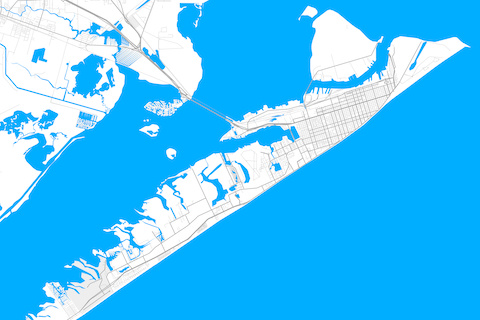Galveston, Oh Galveston

In the summer of 1980, a friend’s parents inexplicably agreed to take my Dallas high school clique to the beach. We came from poor families, so money was tight, but the adults convinced a pastor to loan them a church van, and they booked two concrete campsites at Galveston Island State Park.
For many of my friends, it was their first time seeing the ocean. I was one of the few veteran beachcombers because I’d spent a day with my family in Corpus Christi before Hurricane Celia sent us scrambling home. I didn’t tell my friends that I was only five at the time and hadn’t touched saltwater since.
Celebrities and readers have debated the merits of Galveston beaches in recent months, but for me, the dunes will forever be where my girlfriend Ann broke my heart. The Glen Campbell song still triggers memories of adolescent drama and a time when I-45’s dead-end felt like the edge of the world.
Millions of Texans share fond memories of Galveston, and the historic city welcomes millions more yearly. A new report underwritten by the Cynthia and George Mitchell Foundation warns of trouble ahead. Climate change poses the greatest threat to the barrier island since the 1900 hurricane, one of the deadliest disasters in U.S. history.
“Because of Galveston Island’s physical conditions, it will experience sea level rise sooner and more acutely than many other coastal communities across the nation,” the report by National Wildlife Federation experts concluded.
Most people understand that a warmer planet means higher sea levels, but fewer appreciate that the rise will not be uniform. The sea level in Galveston has been rising a quarter-inch a year for decades.
Higher sea levels combined with stronger storms means greater inundation. Hurricane Ike, a Category 2 storm, brought a 15-foot surge of seawater that damaged 75% of Galveston’s buildings. A Category 5 storm would bring an additional 2.4 feet of water.
The report concludes that by understanding the risk, “the island can serve as a proving ground for adaptation strategies.”
Congress has approved initial funding for the controversial Ike Dike to protect against storm surges. The report suggests nature-based strategies as well. My only hope is that we act quickly before #GalvestonStrong starts trending on social media, and the spot where Ann told me it was over is permanently underwater.
To sign up for Chris Tomlinson's takes on politics, money and life in Texas, click here.
The Cynthia and George Mitchell Foundation funded the report, "Climate Resilient Galveston: Understanding Climate Vulnerabilities and Adaptation Strategies to Build Resilience," by the National Wildlife Federation's Texas Coast and Water Program.


NEWS
Hide Full Index
Show Full Index
View All News